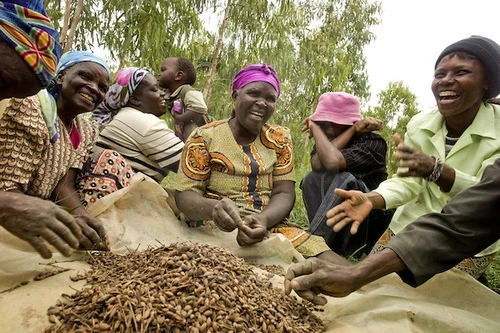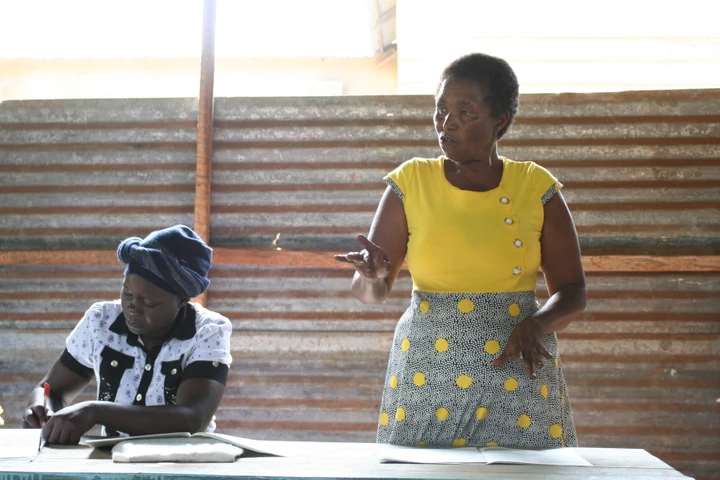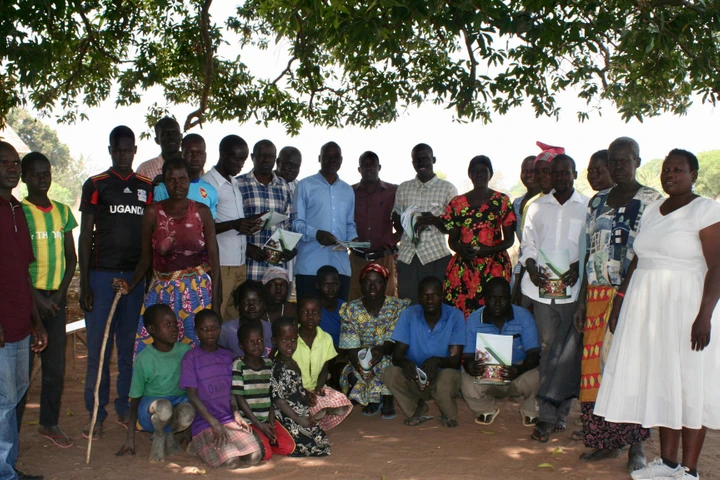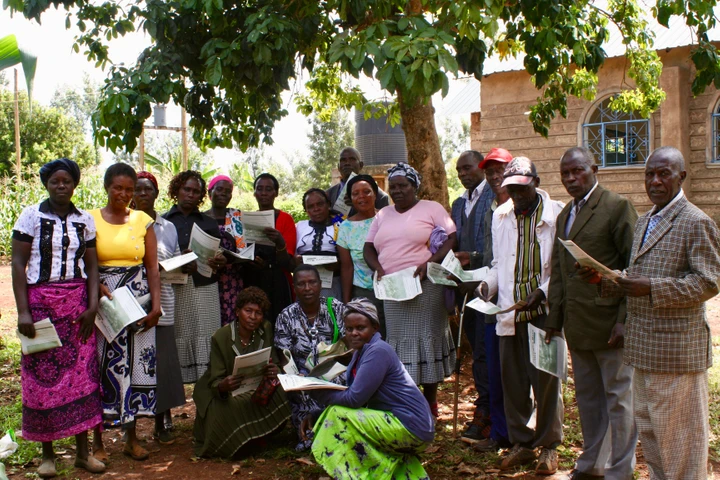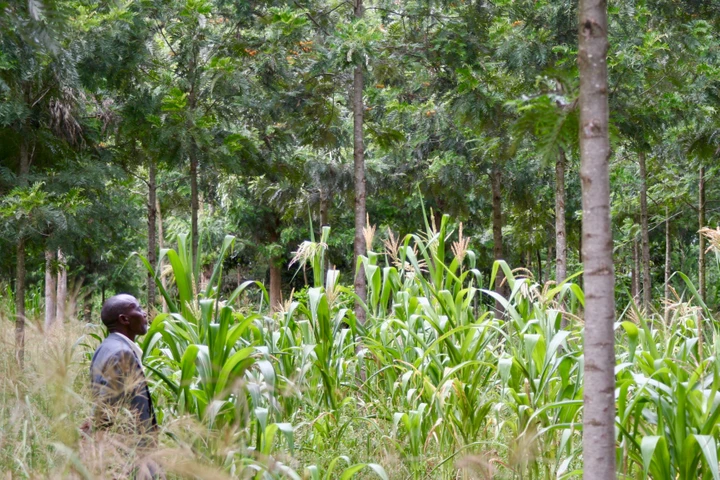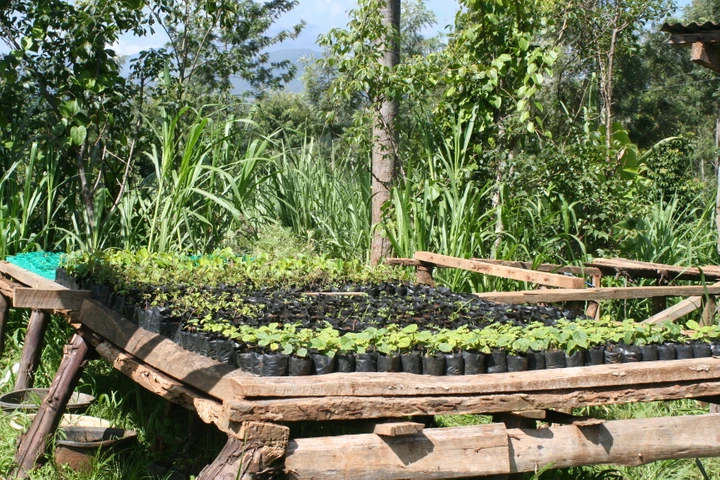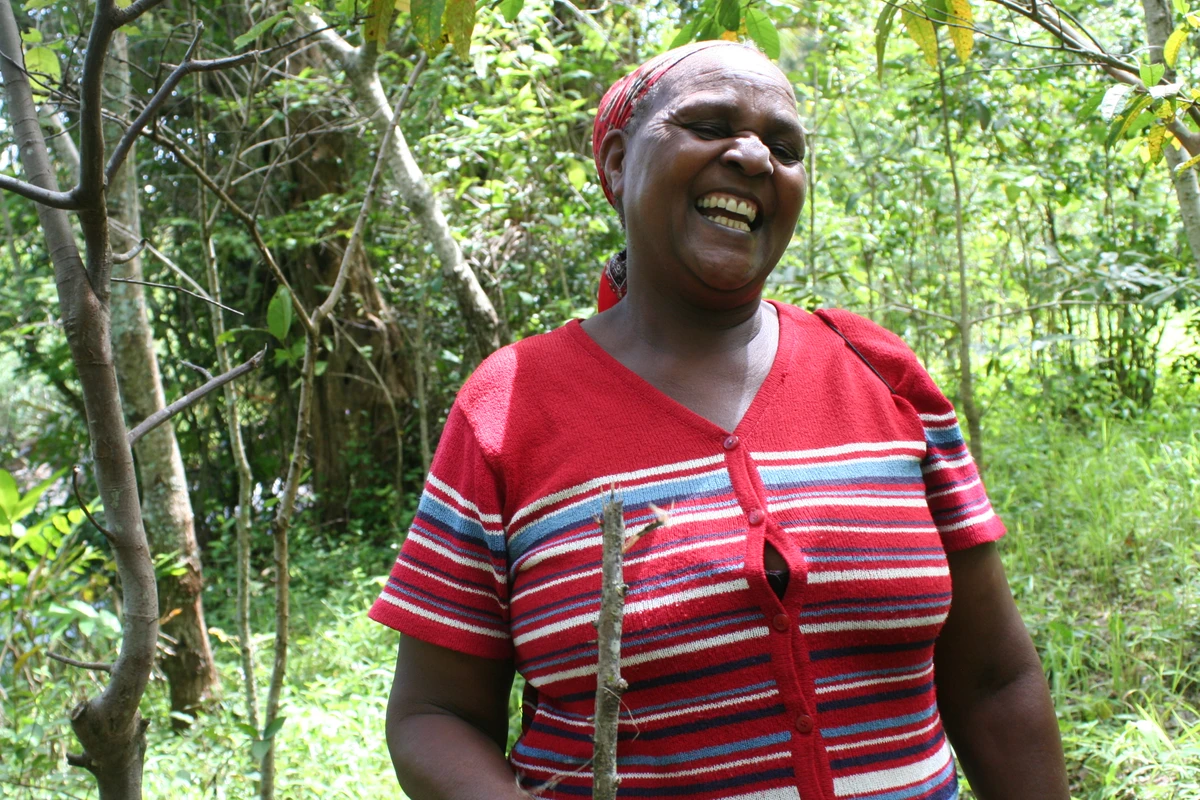Sharing What
Works
One of TIST’s greatest strengths is the creation and implementation of "Best Practices". Best Practices are developed on every level from individual Small Groups up to the entire TIST Program.
What are Best Practices?
Best Practices can range from very specific habits that have been proven effective in a small area, to things that TIST relies upon to operate.
Best Practices are developed through the successes and failures of TIST Participants and leadership. Because of this process, they are constantly changing.
Best Practices vary widely in format, with some best practices containing internal sets of Best Practices themselves.
TIST Best Practices
Kujengana
Kujengana is a critical component of TIST, and a proven best practice. The Swahili translation of Kujengana literally means, “to build each other up”. Within the context of TIST, Kujengana has two parts. Before the end of a meeting, participants say one specific, positive thing that the meeting leader did. In addition, people can mention gifts that the leader has demonstrated. A leader responds to the reception of Kujengana with a simple “thank you,” without any further discussion. Most cultures are taught to criticize, and thus implementing Kujengana takes practice and training.
Kujengana is a useful best practice for many reasons. The use of positive reinforcement allows leaders to develop their gifts and talents. When combined with another best practice, Rotating Leadership, everyone in the group is given Kujengana in turn. This practice allows for the group to learn what each member thinks is important in a good leader; each member is able to develop leadership skills simply by listening, even when they are not serving as a leader.
TIST has found the focusing on positives enables otherwise timid people to speak out and grow as leaders. Focusing on negatives can reinforce hesitance to participate.This is particularly true with youth, women, and other social groups that already face cultural barriers to participation. When you focus on positives, people do not rebel or push back, but will listen to your voice with an open mind. Kujengana is best understood as a double blessing that helps both the recipient and the group as a whole.
Rotating Leadership
Rotating Leadership is another proven best practice of TIST that dates back to the program’s founding. The concept of Rotating Leadership is one of the original components of Small Group formation and supports other TIST best practices. Rotating Leadership takes place in the Small Group, Cluster, and Group of Cluster levels. At the Small Group level, a new leader and co-leader are selected each meeting to lead the group. At the Cluster and Group of Cluster levels, a new Accountability Person is elected every four months. At this time, the current Accountability Person becomes the Co-Leader, and the Co-Leader becomes the Leader.
Rotating Leadership best practices include: agreeing from the beginning to rotate leadership, giving every person a chance to lead and co-lead, not letting anyone dominate discussion, and remembering to wait for people to speak before posing questions.
The practice of Leadership Rotation allows for Kujengana to work well. With Rotating Leadership, people are able to learn from the Kujengana received by previous leaders and implement these lessons when they become leader. Without Rotating Leadership, this would be a practice that only benefits the leader of the group; with Rotating Leadership, the entire group learns from the experiences of each member and has a chance to apply these lessons when it is their turn to lead. People are also less likely to be critical of leadership if they know that they will have an opportunity. They will try to learn from the successes and failures of previous leaders, rather than engaging in negativity and criticism.
This practice facilitates a democratization of access, allowing youth and women to take on leadership roles that they might otherwise be barred from. By implementing Rotating Leadership practices at each level, TIST is able to develop leaders who can assume increasing responsibility if they want to. In particular, groups such aswomen and youth report that their experience with Rotating Leadership often encourages them to take more active roles in their community, church, or other civic enterprises. The practice of Rotating Leadership is further connected to the TIST Values, which stress service to one another in place of a tiered model of power; without a single source of administrative power, issues of honesty and transparency are often easier to deal with.
Small Groups
Small Groups are the foundational blocks with which the structure of TIST is built. The use of Small Groups is a TIST best practice, and they are themselves comprised of a series of Best Practices that allow them to operate. A Small Group is a group of 6-12 people who want to improve their lives and environment by planting trees and adopting sustainable agriculture Best Practices. The formation of Small Groups helps TIST to service the needs of participants while allowing information sharing at the local level.
Small Groups are particularly powerful because they maximize accountability on a local, daily level. In large groups, people do not necessarily know what other members are doing. By organizing in Small Groups, each person is responsible to their neighbors. This is a more real and meaningful responsibility.
The nature of Small Groups also facilitates change in traditional cultures that are hesitant to try new things. Small Groups allow for the success of a single “early adopter” to be seen by other group members. This experience of action and direct outcome is a powerful force that cannot be reproduced with publications or Seminars. Similarly, farmers can experiment with a new practice using shared resources or labor, thus sharing the costs of failure.
Certain Best Practices allow Small Groups to be successful. These include rotating leadership, practicing Kujengana, weekly meetings, preventing one person from dominating discussion, accepting viewpoints without criticism, and identifying Best Practices specific to the environment of the Small Group. Using these best practices, Small Groups are able to plant trees, support one another, quantify their progress, refine their practices, and share their success with one another. Small Groups further work to develop the individual gifts of their members and reach out to other members of the community.
Clusters
Clusters are units of Small Groups that are within walking distance of a central meeting point. This strategy was first implemented in Kenya and has since spread to the rest of the TIST operations. Clusters are designed to provide services such as training, administration, payment, and newsletter distribution to Small Groups, easing some of the logistical challenges of a being spread out. Organizing in Clusters also helps keep costs low and helps create organizational partnerships. Each Cluster has 30-50 Small Groups, and thus consists of several hundred farmers. When it reaches 400 farmers, the Cluster splits in two. Each Cluster is responsible for specific quantities of trees planted and hectares reserved for planting.
Good Clusters meet every month for training, sharing of best practices, distribution of newsletters, and any other matters they have. Activity at Cluster meetings is recorded and submitted, along with Cluster accounting forms. A good Cluster is constantly working to improve the quality of the data it provides and the data it receives from its Small Groups. Cluster Best Practices also include making on-time payments, recruiting new members, and embodying TIST values. Every four months, Clusters will hold an election to choose new leadership.
A Cluster is led by a Cluster Leader, a Cluster Co-Leader, and an Accountability Person. A Cluster Leader should be a servant to the whole Cluster and exemplify TIST Values, while promoting a strong, unified Cluster. They are responsible for leading Cluster activities such as meetings and quantification trips, recruitment, and payment. The Co-Leader takes over when the Leader cannot attend, keeps minutes of meetings, and helps to train the Accountability person. The Accountability Person helps with budgeting, payments, and record keeping. Clusters rely on rotation, alternating genders, and democratic elections to determine leadership.
Seminars
Seminars are a proven TIST Best Practice that date back to the foundation of the program. Seminars are an effective method of spreading information and organizing because they allow leaders to share information with a large audience while keeping a level of personal connection. Seminars have allowed TIST to expand into new areas and conduct outreach on a large scale. The TIST Program has also used “Come and See” Seminars, which combine information sharing with demonstrations and examples of successful TIST practices.
Like Clusters and Small Groups, Seminars are best understood as both a best practice of the TIST Program, and as a set of best practices. Seminar best practices include keeping time, staying focused on “go and do” items, Kujengana, consultation between facilitators, and developing both promises and COS’s for the Seminar. As TIST has developed, several other Seminar-specific best practices have also developed. It is common practice in many developing countries for NGO Seminar participants to demand a “sitting fee” or “sitting allowance” to participate in a meeting. This is a poor strategy for recruiting productive TIST participants and threatens to create a culture of dependency. It is TIST Best Practice to never pay sitting fees.
Paired introductions are another Seminar best practice. People are paired off and ask each other a series of questions. They then introduce the other person to the group. This generates a significantly more detailed and enthusiastic introduction, while laying the groundwork for new relationships.
When a TIST Seminar needs more energy, one strategy is the best practice of paired shares. In this practice a question is posed, and two people (or four people for a “quad share”) engage in a back and forth discussion on the topic. This serves as both a change of pace and as a way of engaging people in a different manner.
Conservation Farming
Conservation Farming (CF) is a proven Best Practice. Education in conservation farming is one of the major co-benefits of participation in TIST. Conservation farming does not damage the environment, is inexpensive to maintain, is fair to the people working the land, and uses appropriate technologies. Following conservation farming best practices allows farmers to increase crop yield, decrease soil degradation, improve groundwater and local biodiversity, and improve soil development.
In order to implement CF, farmers follow a set of CF best practices. Reducing mechanical soil tillage and keeping a permanent layer of organic soil cover (mulch) helps to conserve and replenish soil nutrients. Diversifying crop rotations also improves soil nutrition while breaking the cycle of crop-specific pests and diseases. This can include intercropping, relay cropping, and/or double cropping. These practices increase yield and lessen risk.
The digging and utilization of CF holes is another CF best practice that increases crop yield by protecting seeds and ensuring they have nutrient rich soil. Weeding and conserving topsoil also give seedlings a better chance of survival. In conjunction with weeding, a strong pest management strategy and deployment of organic/homemade pesticides helps to ensure good crop yields.
Agroforestry
Like Conservation Farming, agroforestry puts into place conditions to help successful tree and crop planting. Agroforestry is a system of land-use management in which trees are grown amongst and around cropland. The major goals of TIST are accomplished by the introduction and cultivation of agroforestry. When successfully adopted, this practice improves soil quality, biodiversity, and crop yield.
TIST has developed certain best practices in the realm of agroforestry and tree planting that aid in successful implementation. The use of indigenous species, and species that do not use too much water, are considered best practices. Collecting diverse and healthy seeds and storing them properly are also considered best practices. TIST has found that mixing species of fruit, nut, fodder, and firewood trees is a best practice, as diversification not only provides increased co-benefits but also helps to address various threats to the grove.
One Best Practice that has created particularly good results is the introduction of raised seedbeds. Because roots have a tendency to coil and weaken in a traditional nursery, the use of an elevated structure is critical to the cultivation of successfully transplantable trees. Small Groups work together to construct and utilize raised nurseries in the early stages of sapling cultivation.
Thinning is another practice that has developed in order to meet the needs of TIST participants while advancing the goal program goals. Rather than occasionally clear cutting, the best practice of thinning involves taking down individually selected trees throughout the groves. This allows the remaining trees to thrive while providing necessary firewood and fodder to participants.
Monthly Newsletters
Monthly newsletters are another TIST best practice that has yielded excellent results. Mazingira Bora (Kenya) and The Tree (Uganda) serve as connections between TIST participants and the greater TIST community. They consist of articles from quantifiers, coordinators, administrators, and most importantly, TIST participants. Newsletters are a forum to celebrate success, share knowledge, and request help in overcoming challenges.
TIST works best when people are able to work together to tackle shared problems. While this occurs every day in Small Groups, Clusters, and Seminars, the various newsletters are a way to leverage the knowledge and power of the greater TIST community across geographic and cultural divides. By publishing in multiple languages, the newsletters encourage cross-cultural learning and collaboration between groups that otherwise might not be able to communicate.
While these newsletters are a valuable resource for TIST participants, they also serve as an excellent source of promotional materials, providing easily understandable information for future participants or partners. All the newsletters are published both in print form and on the TIST website.
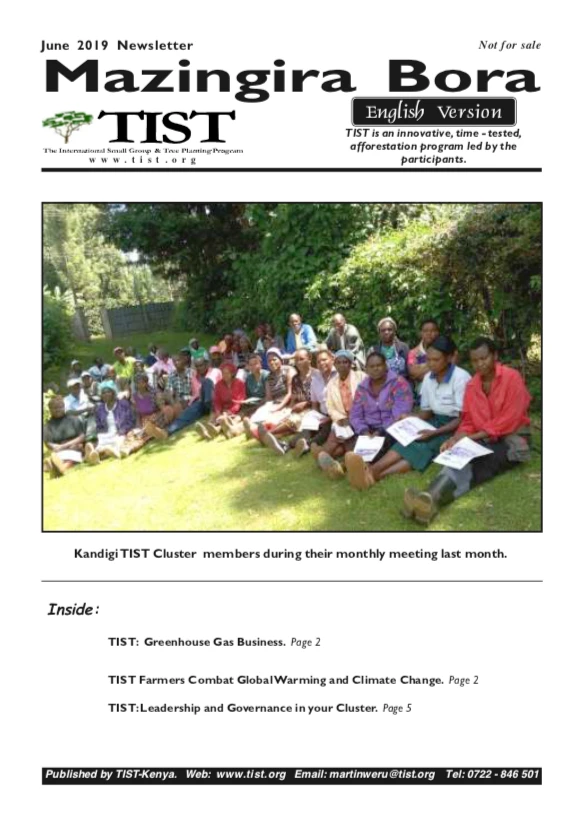
Gender Focus
TIST works in countries that often have strong patriarchal traditions. As a strongly results-oriented program, TIST wants to avoid the marginalization of half of the programs intellectual and leadership capacity. TIST has developed a series of best practices related to opportunity and gender equality in order to pursue equality, while taking advantage of TIST participants’ talents and gifts.
It is a TIST Best Practice to proactively ensure that women have equal access to leadership roles. Rotating leadership helps to identify leadership potential. After this identification, it is easy for the status quo to persist with male-dominated leadership. TIST takes steps to not only identify but also actively support and encourage women who wish to lead.
When attending Seminars, it is TIST Best Practice for each group to send one man and one woman. This ensures that there is gender equality in accessing and sharing knowledge. It also allows for a broader range of opinions and perspectives to be shared at the Seminars. Similarly, when TIST is sending an expansion team, it sends a team with one man and two women. This sends a message that TIST is not a 'women's organization' or a male-dominated organization, but that women are encouraged to act in leadership roles within the program.
The TIST expansion effort is supported by and relies on these Best Practices to succeed. Many of these are countercultural in the areas where we operate.
Creating an environment that allows for female leadership, managing an accurate quantification process, or de-stigmatizing an HIV positive member are small victories that allow for large results.
TIST Stories
Real life stories from TIST Farmers who are transforming their lives, ensuring better futures for their children and improving local communities by planting trees.


